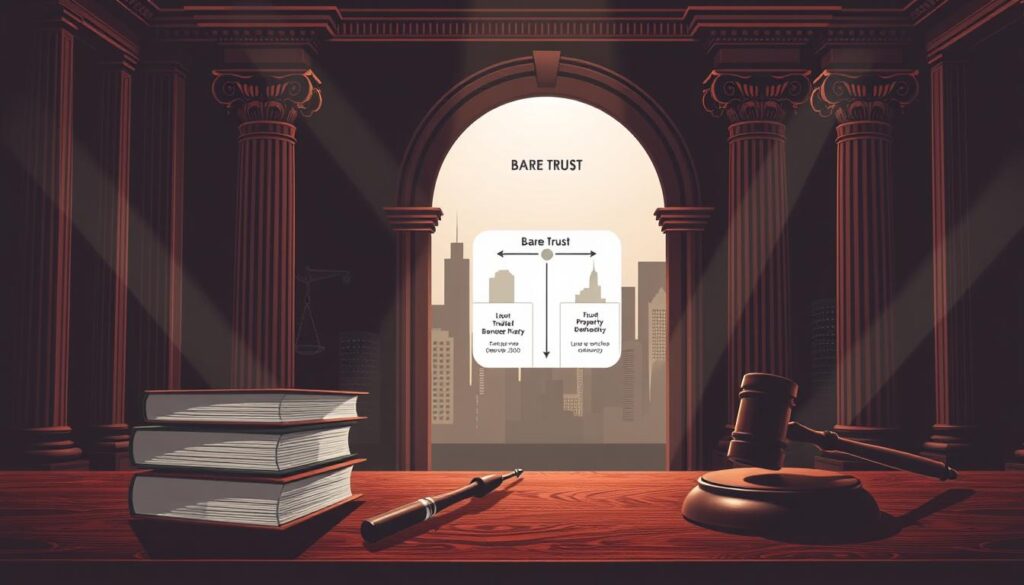Table of Contents
Have you ever wondered how legal arrangements can protect your assets while maintaining simplicity? A bare trust offers a straightforward solution for managing property, making it a popular choice for tax efficiency and privacy in Canada.
In this legal structure, the trustee holds the legal title of the property, but the true ownership lies with the beneficiary. This separation is crucial for understanding how bare trusts function in property transactions.
Commonly used for gifting to minors, a bare trust allows parents to transfer assets while the child reaches the age of majority—18 in most Canadian provinces and 16 in Scotland. This setup ensures the beneficiary gains control once they come of age.
For those seeking legal expertise in employment matters, consulting with employment lawyers in Winnipeg can provide clarity on how bare trusts align with your legal goals.
Updated as of November 18, 2024, bare trusts in Canada now have exemptions from T3 returns unless specifically requested by the CRA. New reporting rules starting in 2025 further simplify compliance for trusts with assets under $50,000.
Understanding bare trusts can empower you to make informed decisions about your assets. Keep reading to explore how this legal tool can benefit your financial planning and property management.
Introduction to Bare Trusts
A bare trust is a legal arrangement where a trustee holds property for the benefit of another person, known as the beneficiary. This type of trust is characterized by its simplicity, with the trustee having no discretion over the management of the assets.
Definition and Key Concepts
In a bare trust, the trustee’s role is limited to holding the legal title of the property. The beneficiary retains control over the assets and any income generated. This structure is often used for its tax efficiency, as the income is attributed directly to the beneficiary.
Context in Canadian Legal and Tax Systems
In Canada, bare trusts are subject to specific tax rules. Recent changes to reporting requirements now exempt certain bare trusts from filing T3 returns unless requested by the CRA. This relief applies to tax years ending in 2023 and 2024, simplifying compliance for many trusts.
For more detailed information on bare trust rules, consulting legal experts can provide clarity on how these structures align with your financial goals. Additionally, understanding the legal profession’s role in such matters can be explored through resources like how to become a lawyer in.
Understanding What is a bare trust and Its Legal Framework
In the realm of legal arrangements, bare trusts stand out for their clarity and simplicity. This section delves into the core components that define a bare trust, focusing on the distinction between legal and beneficial ownership, as well as the principal-agent relationship that governs its operations.
Legal Title vs. Beneficial Ownership
At its core, a bare trust distinguishes between legal title and beneficial ownership. The trustee holds the legal title, meaning their name appears on official documents. However, the true control and benefits lie with the beneficiary. This separation is fundamental, as it allows the trustee to manage the trust assets while the beneficiary retains all rights to the income and capital.
| Aspect | Legal Title | Beneficial Ownership |
|---|---|---|
| Holder | Trustee | Beneficiary |
| Documentation | Appears on legal documents | Entitled to benefits and control |
| Responsibilities | Manages trust assets | Exercises control over assets |
| Benefits | Limited to management duties | Receives income and capital |
The Principal-Agent Relationship Explained
The relationship between the trustee and beneficiary mirrors that of a principal and agent. The trustee, as the agent, acts on behalf of the beneficiary, who is the principal. This dynamic ensures that the trustee’s actions align with the beneficiary’s interests, maintaining the integrity of the trust’s purpose.

As the owner of the trust assets, the beneficiary holds ultimate authority. The trustee’s role is constrained to administrative tasks, without discretion over the trust’s management. This structure simplifies the handling of capital and ensures that any gain directly benefits the beneficiary.
In essence, the bare trust’s legal framework is designed for clarity and efficiency. By clearly defining the roles of the trustee and beneficiary, it eliminates ambiguity and ensures that the trust operates in accordance with the beneficiary’s intentions.
Taxation and Reporting Requirements for Bare Trusts in Canada
Understanding the tax obligations and filing requirements for bare trusts is essential for compliance and avoiding penalties. This section outlines the key aspects of taxation and reporting for bare trusts in Canada.
Annual T3 Filing Requirements
Bare trusts are typically required to file an annual T3 return with the Canada Revenue Agency (CRA). The deadline for filing is 90 days after the end of the tax year. This return includes Schedule 15, which details the trust’s income, assets, and beneficiary information.
Exemptions and Recent CRA Relief Measures
The CRA has introduced exemptions for certain bare trusts. Trusts with assets under $50,000 are exempt from filing, as are those where all trustees and beneficiaries are related and the asset value does not exceed $250,000. Additionally, the CRA has provided relief for the 2023 and 2024 tax years, exempting many bare trusts from filing T3 returns unless specifically requested.
| Aspect | Requirement | Details |
|---|---|---|
| Filing Deadline | 90 days after tax year-end | Applies to all bare trusts unless exempt |
| Exemptions | Asset Value ≤ $50,000 | Trusts with assets under $50,000 are exempt |
| Penalties | $25/day, min $100, max $2,500 | Failure to file on time incurs penalties |
For more information on trust reporting requirements, consult the latest CRA guidelines to ensure compliance and avoid penalties.

Benefits and Advantages of a Bare Trust
Bare trusts offer a strategic approach to asset management, combining tax efficiency with operational flexibility. This section explores the primary benefits, focusing on tax savings and ease of asset transfer.
Tax Efficiency and Avoiding Unnecessary Taxes
One of the standout advantages of a bare trust is its ability to minimize tax burdens. By structuring assets under a bare trust, individuals can avoid provincial land transfer taxes and probate fees, significantly reducing overall tax liability. This structure ensures that income and capital gains are reported directly on the beneficiary’s tax return, preventing double taxation and offering a clear tax-efficient solution.
Additionally, bare trusts with assets under $50,000 are exempt from filing T3 returns, simplifying compliance and reducing administrative overhead. This exemption makes bare trusts an attractive option for those seeking straightforward asset management without the complexities of extensive tax reporting.
Flexibility in Ownership and Property Transfers
Bare trusts provide unparalleled flexibility in transferring ownership interests, making them ideal for both business and family settings. This structure allows for seamless asset transfers without altering beneficial ownership, ensuring continuity and stability in asset management.
Such flexibility is particularly advantageous in estate planning, where it enables the smooth transition of assets to beneficiaries without the need for complex legal arrangements. The ability to maintain control while efficiently transferring assets makes bare trusts a versatile tool in long-term financial planning.
| Aspect | Benefit | Details |
|---|---|---|
| Asset Transfer | Seamless transfers without ownership changes | ideal for maintaining asset control and management |
| Tax Exemptions | Reduced reporting for small assets | Trusts under $50,000 are exempt from T3 filings |
| Income Reporting | Efficient tax handling | Income and gains reported on beneficiary’s return |

By leveraging these benefits, bare trusts provide a strategic solution for effective financial management, blending tax efficiency with operational simplicity. This makes them a valuable asset for those seeking to optimize their financial strategies.
Challenges and Disadvantages Associated with Bare Trusts
While bare trusts offer several advantages, they also come with their own set of challenges and potential drawbacks. One of the most significant issues is the risk of non-compliance with evolving reporting rules, which can lead to substantial penalties and complications for beneficiaries.
Non-compliance and Penalty Risks
The Canada Revenue Agency (CRA) has introduced stricter reporting requirements for bare trusts, emphasizing the importance of timely and accurate filings. Failure to meet these obligations can result in penalties, which can escalate quickly. For instance, missing the 90-day deadline for filing a T3 return can lead to daily penalties, ranging from a minimum of $100 to a maximum of $2,500.
| Aspect | Penalty Details |
|---|---|
| Filing Deadline Missed | $25 per day, up to $2,500 |
| Exemptions | Trusts with assets under $50,000 are exempt |
| Responsibility | Falls on the trustee or legal representative |
Changes in tax laws or misinterpretation of reporting rules can further complicate compliance. Ambiguity around ownership and control may lead to confusion about who is legally responsible for filing, potentially causing disputes among beneficiaries. Real-life examples highlight how such oversights can jeopardize a trust’s status and burden beneficiaries with unforeseen complications.

For those navigating these complexities, consulting legal experts, such as Canadian legal professionals, can provide clarity and ensure adherence to all regulatory requirements. Understanding and addressing these challenges is crucial to maintaining the integrity and effectiveness of a bare trust arrangement.
Practical Applications in Estate Planning and Property Transfers
Estate planning and property transfers are areas where bare trusts shine. Their simplicity and clarity make them a favorite for managing assets smoothly.
Using Bare Trusts for Gifting Minors
Bare trusts are a great way to gift assets to minors. Parents can transfer property to a trust, keeping legal title with a trustee. When the child turns 18, they gain full control. This setup is tax-friendly and avoids probate fees, making it ideal for planning a child’s future.
Efficient Property Transfer in Business and Family Settings
Bare trusts also simplify property transfers in businesses and families. They let companies or families move assets without changing ownership details. This keeps things private and straightforward, which is perfect for estate planning.

Real-world examples show how bare trusts help in complex planning. Clear goals and good planning are key to getting the most out of them. Despite being simple, they offer big benefits for legal and financial plans.
Conclusion
In conclusion, bare trusts offer a straightforward and efficient way to manage assets, blending tax efficiency with operational simplicity. By understanding the roles of the trustee and beneficiary, individuals can make informed decisions that align with their financial goals. The ability to avoid probate fees and land transfer taxes makes this structure particularly appealing for estate planning and property transfers.
Recent updates to reporting requirements have simplified compliance for many bare trusts. For instance, trusts with assets under $50,000 are now exempt from filing T3 returns, reducing administrative burdens. However, it’s crucial to stay informed about capital gain implications and income capital issues, as these can impact trustee beneficiary responsibilities and overall tax planning.
While the benefits are significant, careful management is essential. Non-compliance with CRA regulations can lead to penalties, making it important to adhere to deadlines and maintain accurate records. Consulting with legal professionals can provide clarity on beneficiary bare considerations and ensure that all aspects of the trust are handled correctly.
Ultimately, a bare trust can be a powerful tool for tax-efficient asset management. By staying informed and making deliberate decisions, individuals can navigate the complexities of capital gain and income capital issues with confidence. Regular reviews of trust planning in light of regulatory changes will help maintain its effectiveness and ensure long-term financial security.



